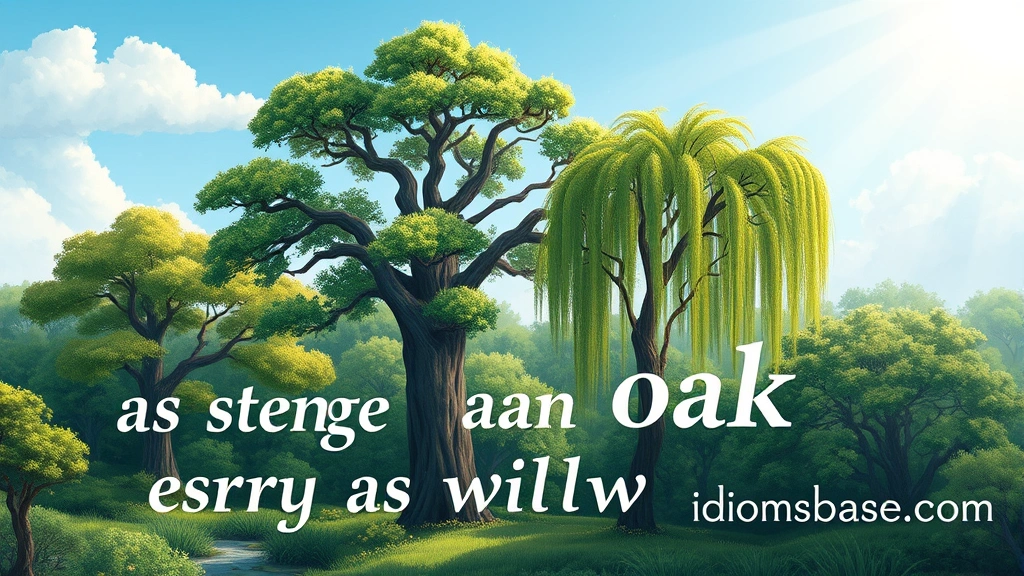Have you ever stood beneath a towering tree, feeling its quiet strength and timeless wisdom? Trees are more than just plants; they're symbols of life, growth, and connection. They inspire poets, artists, and dreamers alike! Today, we're diving into the wonderful world of similes to explore how trees can be compared to all sorts of surprising things. Get ready to see these leafy giants in a whole new light!
Why Similes for Trees?
Similes are like little magic wands for your writing. They help you paint vivid pictures in the reader's mind by comparing two different things using "like" or "as." When you use a simile for a tree, you're not just describing it; you're giving it personality, emotion, and a deeper meaning. It's a fantastic way to make your words sing!
40 Marvelous Similes for Trees
Let's explore some creative ways to describe trees. You'll be amazed at the possibilities!
Trees as Pillars of Strength and Stability
These similes highlight the tree's powerful, unyielding nature.
- As strong as a fortress: Its trunk stood firm, like a fortress against the storm.
- Like an ancient sentinel: The old oak watched over the valley like an ancient sentinel.
- As rooted as tradition: Its presence was as rooted as tradition in the village square.
- Like a patient guardian: The tree stood by the river, like a patient guardian.
- As enduring as time itself: The redwood seemed as enduring as time itself.
- Like a silent observer: It stood on the hill, a silent observer of changing seasons.
- As steadfast as a lighthouse: Its peak was as steadfast as a lighthouse guiding ships.
- Like a living monument: The grand old tree was like a living monument to history.
- As solid as a mountain: Its base was as solid as a mountain's foundation.
- Like an unwavering anchor: In the shifting landscape, it was an unwavering anchor.
Trees as Symbols of Life and Growth
These similes focus on the tree's vibrant, flourishing aspects.

- As vibrant as a dancer: Its leaves swayed, as vibrant as a dancer's skirt.
- Like a green fountain: The weeping willow cascaded like a green fountain.
- As fertile as a mother's womb: The orchard was as fertile as a mother's womb in spring.
- Like a breathing giant: You could almost feel the tree expanding, like a breathing giant.
- As lively as a child's laughter: The young sapling was as lively as a child's laughter.
- Like a living tapestry: Its branches wove together like a living tapestry of leaves.
- As resilient as hope: Despite the harsh winter, it stood, as resilient as hope.
- Like a silent symphony: The rustling leaves played like a silent symphony.
- As busy as an ant colony: The tree teemed with life, as busy as an ant colony.
- Like a natural skyscraper: The tall pine reached for the sky, like a natural skyscraper.
Trees as Artistic and Poetic Figures
Here, we see trees through a more imaginative and beautiful lens.
- As graceful as a ballerina: The delicate birch was as graceful as a ballerina.
- Like a painter's brushstroke: Its autumn colors were like a painter's bold brushstroke.
- As intricate as lacework: The bare branches formed patterns as intricate as lacework.
- Like a living sculpture: Pruned perfectly, it stood like a living sculpture.
- As elegant as a queen: The mature magnolia was as elegant as a queen in her garden.
- Like a whispered secret: The gentle sway of its leaves was like a whispered secret.
- As ethereal as a dream: In the fog, it looked as ethereal as a dream.
- Like a silent poet: The gnarled oak seemed to tell stories, like a silent poet.
- As delicate as a feather: Its new leaves were as delicate as a feather.
- Like a sleeping dragon: The sprawling roots coiled like a sleeping dragon.
Trees as Everyday Objects and Concepts

These similes offer unexpected comparisons, making trees relatable.
- As quiet as a library: The forest was as quiet as a library at dusk.
- Like an umbrella: Its wide canopy spread like an umbrella against the sun.
- As tall as a telephone pole: The young sapling shot up, as tall as a telephone pole.
- Like a giant broom: Its bare branches swept the sky like a giant broom.
- As rough as sandpaper: The bark felt as rough as sandpaper.
- Like a green cloud: From above, the tree looked like a fluffy green cloud.
- As tangled as a ball of yarn: The thicket was as tangled as a ball of yarn.
- Like a natural ladder: Its low branches offered a natural ladder for climbing.
- As straight as a ruler: The young pine grew as straight as a ruler.
- Like a welcoming arms: Its branches reached out, like welcoming arms.
Key Takeaways
- Similes enhance writing: They make descriptions more vivid and engaging.
- Trees are versatile subjects: They can be compared to many different things, reflecting strength, life, beauty, and even everyday objects.
- Creativity is key: Don't be afraid to think outside the box when crafting your own similes.
- Connect with your audience: Using similes helps readers visualize and feel what you're describing.
Frequently Asked Questions (FAQ)

Q1: What is a simile?
A simile is a figure of speech that directly compares two different things, usually using the words "like" or "as." Its purpose is to make a description more vivid, interesting, or understandable by drawing a comparison to something familiar. For example, "The cloud was as fluffy as cotton candy" is a simile.
Q2: How do similes differ from metaphors?
While both similes and metaphors are figures of speech that compare two unlike things, they do so differently. A simile states that one thing is like another (using "like" or "as"). A metaphor, on the other hand, states that one thing is another, implying the comparison without using "like" or "as." For instance, "The cloud was cotton candy" is a metaphor.
Q3: Why are similes important in writing?
Similes are incredibly important because they add depth, imagery, and emotion to writing. They help readers visualize scenes, understand complex ideas by relating them to simpler ones, and make language more engaging and memorable. They can transform a bland description into a vibrant picture.
Q4: Can I create my own similes for trees?
Absolutely! The best similes often come from personal observation and creativity. Think about a tree you know well. What does it remind you of? Does it look like something? Does it feel like something? Does it act like something? Play with different comparisons using "like" or "as" until you find one that truly resonates.
Q5: Are these similes only for poetry?
Not at all! While similes are a staple in poetry, they are also widely used in prose, fiction, non-fiction, speeches, and even everyday conversation. They can make any form of communication more descriptive and impactful. Feel free to use them in stories, essays, or even when just describing your backyard.
We hope you've enjoyed this journey through the world of tree similes! Which one was your favorite? Do you have a unique simile for a tree that you'd like to share? Let us know in the comments below!






